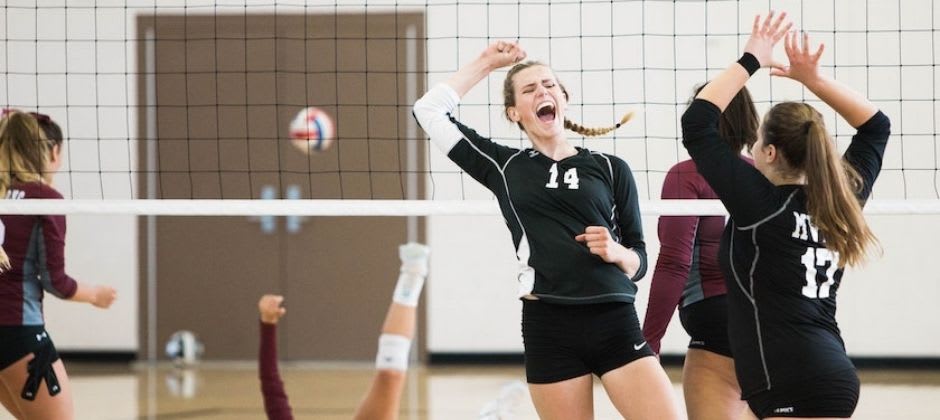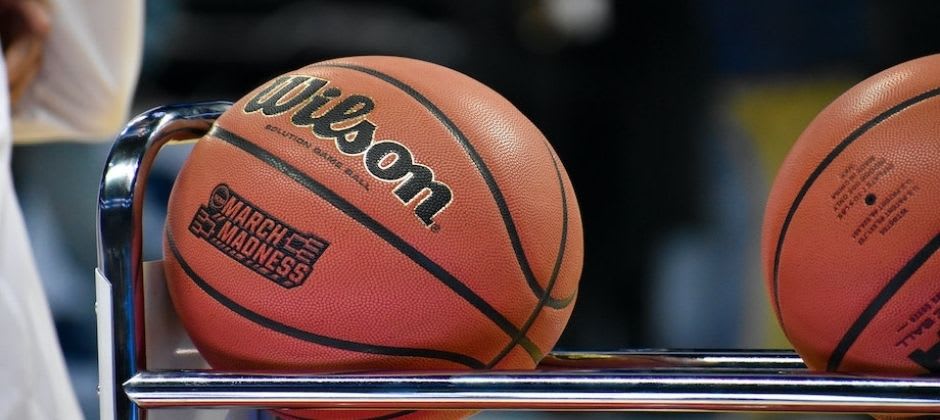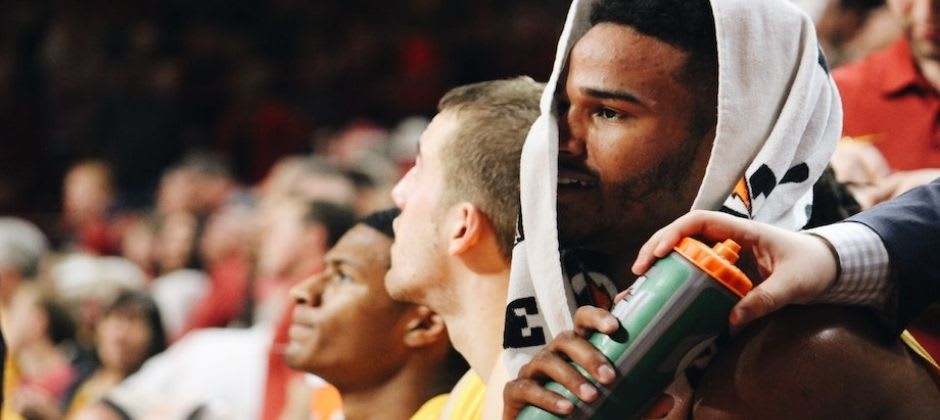How to Improve Your Chances of Being Awarded a 2024 Sport/Athletic Scholarship in the US
The US is home to the largest collection of scholastic athletic programs in the world. Find out how many athletic scholarships each division awards every year. Improve your chances of being awarded a full sport/athletic scholarship in 2024.
- Study Abroad in the United States
- Scholarships

The US is home to the largest collection of scholastic athletic programs in the world. And they are big business. College football, for example, can generate over $4 billion in revenue and $1.8 billion in profits.
While improving student athletes’ share of those profits remains a subject of debate, college students are said to benefit in at least two ways.
First, these revenues fund athletic scholarships and stipends that cover (or significantly reduce) the costs of students’ tuition, housing, meals and study materials.
Second, the profitability of popular college-level programs like football and basketball help to subsidize and sustain more niche programs like soccer, swimming, tennis, volleyball, water polo, gymnastics, ice hockey, golf, squash and crew - and so many others.
The flip side, however, is that the college sports industry is strictly regulated. This is, in part, due to the high risk of fraud during the college recruitment phase.
The overall effect is that applications for athletic and sport scholarships are subjected to intense scrutiny in an effort to maintain a competitive and level playing field for all participants.
Looking for a scholarship?
Use our free scholarship directory to discover hundreds of scholarships from dozens of countries.
Here are 2 ways to improve your chances of success in being awarded a sport / athletic scholarship:
1. Understand where you fit into the different college-sports divisions
US college sports are dominated by 3 organizations. The National Collegiate Athletic Association (NCAA), the National Association of Intercollegiate Athletics (NAIA) and the National Junior College Athletic Association (NJCAA).
Of course, every institution and every program is different, but college sports can be carved up into 4 main sectors:
NCAA Divisions I and II
These are the pinnacles of US college-sports. They are also the most competitive and most heavily regulated of all sectors - and the most difficult for international athletes to join.
The main difference between Divisions I and II is the size of the schools. However, given the smaller size of the programs and teams, entry into Division II schools can be just as competitive.
NAIA
In terms of size and competitiveness, NAIA is equivalent to NCAA Division II. But because its regulations are less restrictive, NAIA is seen as a great platform for local and international students to enter US college sports or potentially be recruited into the NCAA. That being said, many student athletes also ‘go professional’ directly from the NAIA.
NJCAA Divisions I and II
The NJCAA regulates students playing sports while studying at 2 year community or junior colleges. In terms of size and competitiveness, it is equivalent to NCAA Division II.
Without a doubt, community colleges present an amazing cost-saving opportunity for student-athletes. But they are also a great platform on which students can improve their grades and prove their ability to compete at college level - before being recruited to the NCAA and NAIA.
NCAA and NJCAA Division III
This sector - whether at 4 year and 2 year institutions - does not offer any sports or athletic scholarships.
Division III sports programs appeal to students wanting to round out their overall college experience. Students in this sector prefer to play competitive college sports on a voluntary basis - rubbing shoulders with their contemporaries: future professionals, business leaders and entrepreneurs.

2. Identify which of the basic eligibility requirements you fulfil
A large number of athletic scholarships are awarded in the US every year. To qualify for most sports scholarships, you must meet the the NCAA, NAIA or NJCAA's scholarship rules and eligibility requirements.
To help you find out how to get athletic scholarships, we’ve broken down the basic eligibility requirements that apply to the four main college sports sectors.
NCAA Divisions I and II
NCAA Divisions I and II schools provide more than $3.6 billion in athletics scholarships annually to more than 180,000 student-athletes every year.
To compete in NCAA sports at a Division I or II school, students must meet and maintain the NCAA Eligibility Center’s academic and amateurism standards.
For NCAA Divisions I and II, these standards can be summarized down as follows:
NCAA Division I
- Graduated high school
- Completed 16 core courses in high school
- Completed 10 of those core courses before your 7th semester of school
- Earned at least a 2.3 GPA in your core courses
- Earned an SAT / ACT score that matches your core-course GPA on the Division I sliding scale
- Must be an amateur athlete
NCAA Division II
- Graduated high school
- Completed 16 core courses in high school
- Earned at least a 2.2 GPA in your core courses
- Earned an SAT / ACT score that matches your core-course GPA on the Division II sliding scale
- Must be an amateur athlete
Students must meet all the Division I or II academic requirements to compete in their first year at college. However, students may still receive an athletics scholarship for their first year if they qualify as an academic redshirt or partial qualifier. Find out more about those requirements and what it means to be an amateur athlete here.
The NCAA has put together a comprehensive guide to help international students convert, and where necessary translate, their secondary school documents to prove that they meet the relevant requirements.

NAIA
Every year, NAIA schools provide more than $800 million in athletics scholarships annually to more than 77,000 student-athletes.
To participate in the NAIA, students must meet and maintain the NAIA Eligibility Center’s academic and amateurism standards.
In essence, local or international students must have graduated from high school and must satisfy any two of the following requirements:
- Achieved an SAT of at least 970 or an ACT score of at least 18
- Maintained a GPA of 2.00
- Finished in the top half of their graduating class
The NAIA has put together a comprehensive guide to help international students convert, and where necessary translate, their secondary school documents to prove that they meet the relevant requirements.
Students with alternative high school experiences that obtain their GED, or a score of 1040 on the SAT or 20 on the ACT, are deemed to have also fulfilled the GPA requirements.
NJCAA Divisions I and II
Every year, NJCAA schools grant a number of full athletic scholarships up to the limits set for each Division and each sport.
To participate in the NJCAA, students must meet and maintain the NJCAA academic and amateurism standards. The NJCAA’s main academic eligibility requirement is based on the number of full-time terms a student has previously attempted.
In essence, local or international students must have graduated from high school or obtained their GED and must also be enrolled full-time and making progress towards a degree at an NJCAA-member college.
The NJCAA expects international students and students with alternative high school experiences to notarize, and where necessary translate, their secondary school and university documents to prove that they meet the relevant requirements.
NCAA and NJCAA Division III
Neither the NCAA or NJCAA set any minimum standards for establishing or maintaining eligibility in Division III. However, students must satisfy their institution’s rules to sustain their good academic standing and progress toward a degree.
Interested in studying a bachelor’s degree in the US?
Our search engine helps millions students find, compare, and connect with universities and community colleges in the US.
About the Author

Dean Ehrlich is a digital content editor at educations.com. He develops content to support product and site growth. Mainly from South Africa, he has also lived and studied in Botswana and France. He is currently based in Sweden after moving there to study abroad.

Keystone Team
Author
The Keystone Team is comprised of experienced educators and advisors dedicated to providing valuable resources and advice to students all over the world.
Read related articles

Where Can TOEFL iBT Scores Take You?

10 Reasons to Be a Camp Counselor in the US or Canada
